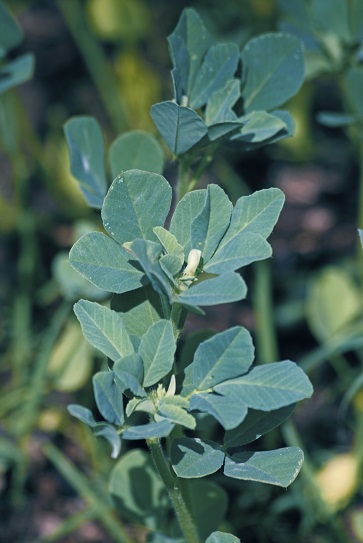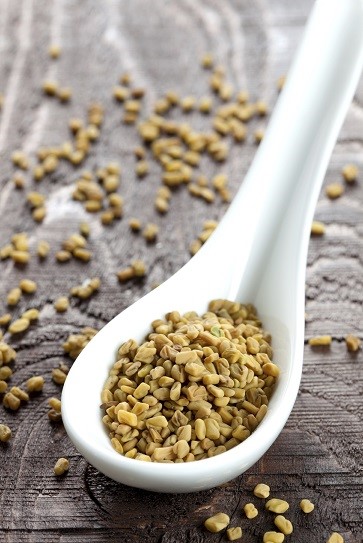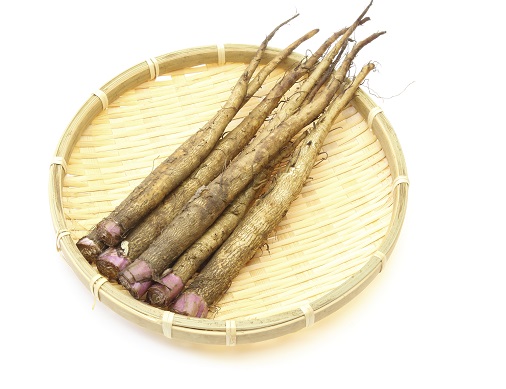 In the acne canon, two of the most unresearched bonus supplements are undoubtedly burdock root and fenugreek.
In the acne canon, two of the most unresearched bonus supplements are undoubtedly burdock root and fenugreek.
These herbal remedies are strangely similar. They are both widely used in folklore, including for acne, but had no studies directly on acne. They both had some promise when examining the root causes of acne, like inflammation, but nowhere near enough for me to recommend them.
Both ranked poorly in the supreme halls of bonus acne supplements, far below ginseng, gelatin or ashwagandha. That’s not even considering the essential nutrients like vitamin A, zinc, or vitamin E…
…and now, these herbs have one more similarity. In the past 12 months, both fenugreek and burdock root have finally featured in direct experiments on acne.
In the original articles, the verdict on both supplements was “we need more evidence”, and several years later, that moment may have finally arrived.
Therefore, in this article, we will simply analyse both studies, and whether they finally catapult these remedies into the acne stratosphere, or whether they destroy all hope completely.
Fenugreek – where we stood before
What’s commonly referred to as fenugreek is the small, yellow seeds of the fenugreek herb. It’s a staple ingredient of traditional Indian curries, providing flavour and thickness all at once. The Ancient Greeks and Romans used fenugreek as cattle feed and it reportedly tastes like bitter, burnt celery.
Back in 2015, our verdict on fenugreek was uncertain, but ultimately leaning towards the negative. On the internet, the acne hype orbited around two hormones:
Insulin – the energy shuttling hormone which exists in all animals, which is vital for life but leads to oily skin when elevated in the bloodstream. Insulin binds directly to receptors in the sebaceous glands. It also increases a closely related hormone IGF-1, which does the same thing.
DHT – the master androgen, closely related to testosterone but 10 times more powerful for oily skin. In the same boat as insulin, being healthy in normal levels but acne-tastic when elevated.
Fenugreek can supposedly decrease both hormones. There’s indirect evidence aplenty, as fenugreek is a popular diabetes remedy in folk medicine stretching from Ethiopia to India, the real world manifestation of haywire insulin. Two faraway cultures have arrived at the exact same conclusion, so there may be something to it.
As for DHT, enemies of hair loss (which is probably everyone except for Jason Statham) on internet forums swear by it, referencing a study where 500mg of fenugreek lowered the hormone by 9.42% in athletic men.
The problem is that the evidence for both powers is slim. A 2001 study found strong improvements in insulin sensitivity after feeding fenugreek to 25 diabetic patients, but another found no extra powers when added to the diabetes drug metformin. For DHT, the one fabled study was followed by a study on 30 resistance trained men, where DHT was static and testosterone actually rose.
Nor did fenugreek have any separate, obscure acne powers. The studies on antioxidants and inflammation were a trickle. We were left only with the dream, the hope of undiscovered compounds, and the promising fact that Indian folklore loves it for acne.
Today’s study
 Released in June 2019, the design was perfect, comparing oral fenugreek to oral azithromycin over 2 months.
Released in June 2019, the design was perfect, comparing oral fenugreek to oral azithromycin over 2 months.
Azithromycin is a common oral antibiotic, as opposed to topical antibiotics like clindamycin. It’s also prescribed for Lyme disease and sinus infections. The goal is wiping out p.acnes bacteria.
I don’t recommend antibiotics for acne, because they decimate your healthy gut colonies too, and even mainstream dermatologists are slowly turning against them (at a snail’s pace, but it’s still good to see). But anyway, Azithromycin is undoubtedly effective, reducing acne by 88% in one study, so it’s a great comparison.
Acne was tested using the Global Acne Grading Score (GAGS), a more technical assessment, and a simple acne lesion count. 20 patients were enrolled, with 10 per group, assigned by random. The age range was 12-30, covering teenager breakouts and stubborn adult acne all the same. They took a 500mg extract of the fenugreek seeds, not leaves or stems.
At day 0, the antibiotic group scored 19.66 on the GAGS scale. After 1 month and 2 months, the antiboitic reliably reduced acne to 15.83 and 14.83 respectively.
As for fenugreek? It’s the moment of truth, after all these years, but the fenugreek achieved nothing. After 1 month, the GAGs score fell from 23.12 to 22.75. After 2 months, it remained static at 22.75. It’s a minuscule reduction, but the lesion count was more disappointing, falling from 83.62 to 71.62, before rising again to 81.37.
Not 100% reliable
This study doesn’t hammer a final nail into the coffin of fenugreek. For one thing, there’s the minuscule sample size.
A study on 2000 high school teenagers already beats a study on 100 for reliability, but we’re talking about 20 people. Actually, it’s only 14, because 4 members of the antibiotic group and 2 members of the fenugreek group quit. For example, one antibiotic taker moved to a faraway city (a slight problem) while a fenugreek patient suffered from gastrointestinal swelling.
The reliability was compromised, but at the same time, the results are still totally expected. If you had to gamble on the results, I would bet that azithromycin would strongly reduce acne (its dangers down the road notwithstanding) and that fenugreek would be a blip.
There are definitely hypothetical scenarios where this study could fail miserably. Azithromycin works reasonably well in everybody; it digests in your stomach, makes its way to the face, and takes out p.acnes lurking on the skin pores. P.acnes is a key link in the acne chain, stimulating inflammatory chemicals which go overboard and swell up the surrounding pores. Almost every acne patient stands to benefit, but fenugreek could be more specific, for all we know. If DHT is its speciality, then it might fail for people where sky-high insulin is the culprit.
Maybe fenugreek works well for oily skin, but outside of the realm of DHT. For example, vitamin B3 binds to HCA2 receptors in the sebaceous glands, while epigallocatechin-3-gallate in green tea once reduced oily skin by 60% after 8 weeks. If the 8 acne patients suffered from highly inflammatory acne, as opposed to non-inflammatory acne or a mixture, then it wouldn’t be surprising that fenugreek didn’t succeed. The 8 participants might have all had a rampaging, haywire immune system.
Another possible flaw was that the fenugreek group started with a higher baseline of acne: 23.12 vs 19.66. However, if anything, this supports the study.
More acne would give fenugreek greater room to improve, but it still didn’t succeed. The average age of the fenugreek group was also far lower, at 16.63 vs 22.50 for azithromycin. It’s hard to predict the consequences of this, but they could easily exist. For example, fenugreek could be superior for the factors behind adult acne.
Burdock root – where we stood before
 Meanwhile, our previous stance on burdock root was the opposite: uncertain, but leaning towards the positive.
Meanwhile, our previous stance on burdock root was the opposite: uncertain, but leaning towards the positive.
It shared the folklore popularity of fenugreek, buried deep in the obscure texts of Indian Ayurvedic medicine and Traditional Chinese Medicine. Similarly, its mainstream power of detoxification was a mere fairy tale. The claims of cleansing toxins from the bloodstream, pushing toxins out through the skin pores, and supercharging the liver are about as realistic as King Arthur slaying a dragon.
What burdock root does have is fantastic studies on chronic inflammation. In oral supplementary form, burdock root lowers some of worst immune system chemicals behind acne, such as interleukin-8, TNF-a, and IL-1alpha.
Burdock also lowers malondialdehyde, an accurate marker of bloodstream free radicals. It contains several active medicinal compounds, such as arctigenin, arctiin, tannins, beta-eudesmol, caffeic acid, and chlorogenic acid, the heart protective superstar of coffee. Then there’s the soluble fiber inulin, which may or may not feed your healthy gut bacteria colonies, depending on how healthy your gut is already.
The herb itself is the 12 inch long root of the burdock plant, which originated in Europe and Asia but has successfully migrated to the USA. Burdock has bright purple flowers, and the root is eaten as starchy tuber like vegetables, which in Japan is dubbed Gobo.
From the evidence we have so far, burdock root seems decent, but does nothing unique. That could all change soon…
The fresh study
This experiment was different from the one on fenugreek. They didn’t take whole burdock and feed it to human volunteers.
Instead, they extracted the antibacterial peptide fraction (ABPf) and tested it on propionibacterium acnes in a petri dish. Essentially, plants and animals alike produce antibacterial peptides. Scientists are increasingly finding themselves in the throes of obsession as their formerly unstoppable antibiotics work less and less.
For example, frogs naturally produce an antibacterial peptide called magainins, which accumulates in the surface of their slimy skin. The frog can swim in its swampy ponds in peace without worrying about infection.
As for burdock, the next step was purifying the extract to remove protein, but they tested it on acne bacteria at each stage. Before purification, the burdock peptide extract inhibited p.acnes bacteria superbly.
It also crippled two other skin bacteria strains, staphylococcus aureus and s. epidermidis. It worked in a petri dish, but should easily apply when rubbed into your skin.
After purification though, the extract’s powers multiplied exponentially, particularly for p.acnes. The minimum inhibition concentration (MIC) for s. aureus and s epidermidis decreased two fold, but with p.acnes it fell 8-fold. Its MIC was a minuscule 62.5 µg/mL.
The peptide extract wasn’t the ultimate remedy, as it failed for gram negative bacteria. However, that’s OK, because p.acnes is gram positive, and it’s better that burdock root specialises in certain strains anyway.
More advanced results
Next, they tested the burdock APBf for its antioxidant powers. The overexcited scientists were hoping for the ultimate acne cure, and like a charm, it strongly reduced free radicals as measured by the gold standard DPPS test. There are two possibilities: 1) that normal plant antioxidants were wrapped up in the extract, or 2) that the peptides themselves had obscure, unusual antioxidant powers.
The cytotoxicity (cell death) score was great as well. They might be a weapon of destruction wielded by the burdock plant, but the antibacterial peptides didn’t damage human skin cells even at the highest concentrations.
They even used a “selectivity index, the ratio of cell death to antibacterial powers. Below 10 equals too much danger, while above 10 means that the remedy is worth it. Great news: the purified extract scored 160-320, depending on the specific p.acnes strain (because there’s thousands).
One bacterial peptide particularly stood out, with permease-blocking powers. Permease is an enzyme used to transport energy, such as glucose, fructose, or sugar alcohols, through the cell membrane and into the bacteria’s core, so blocking it is fatal. The scientists identified 43 different antibacterial peptides within the burdock extract, 10 of which were particularly prominent.
Why the study means little
So far, it seems like the first ever study on burdock root and acne has gone fantastically.
However, there’s one problem: an antibacterial peptide extract does not represent the raw root. It doesn’t even represent the root ground down and compressed into a capsule alongside a rice flour filler. The study isn’t on real human skin, only a petri dish. It’s not even an oral study, which is burdock’s most popular usage.
There are two roadblocks to get through. Firstly, the concentrations of the peptides in burdock root will be a tiny fraction of this experiment, where they were isolated and extracted. They will still work, sure, but they’ll be seriously diluted.
Secondly, there’s another layer of dilution to withstand when you swallow the antibacterial peptides and they are distributed to every tissue in your body, rather than just the skin.
In fact, the peptides might be fragile molecules which the digestive system obliterates. Some plant compounds are well absorbed, like the blueberry’s pterostilbene at 80%, but curcumin from turmeric has an absorption rate of 2%. A single peptide will reach your skin and collapse like the last surviving soldier of an army crossing the Sahara desert.
For topical burdock, this study is very promising, but it doesn’t tell us a thing about the burdock root pills in health stores near you.
Conclusion
Sadly, after many 5 years of waiting, these studies are pretty disappointing. However, we can be slightly more confident now that fenugreek is a weak acne remedy.
At the very least, fenugreek definitely isn’t a miracle supplement vibrating uncontrollably with raw acne-clearing power. The sample size was way too small, but it’s strangely coincidental that the results match precisely with what we would have predicted.
As for burdock root, the only positive is that scientists are clearly interested in it and we’ll be getting more studies in the future. That said, the peptides are still an interesting discovery. There’s no point muttering curses under our breath and missing the promise right in front of our eyes. It might turn out that using burdock as a supplement was a 2000 year old mistake and that its true potential always lay as a topical treatment. Also, because this study amount to anything, it doesn’t invalidate the excellent anti-inflammatory studies on burdock root.
Nevertheless, nothing has changed for now. Fenugreek and burdock root remain well down the rankings for acne-clearing bonus supplements.
Thanks for reading!